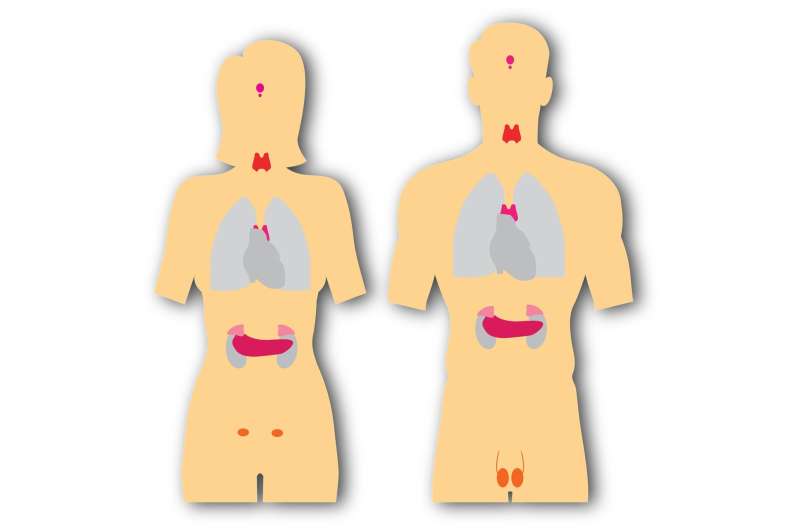This article has been reviewed according to Science X's editorial process and policies. Editors have highlighted the following attributes while ensuring the content's credibility:
fact-checked
trusted source
proofread
Better access to diagnostic tests raises incidence of thyroid cancer in more affluent areas

The incidence of thyroid cancer in São Paulo State, part of Brazil's relatively developed Southeast region, varies considerably according to socioeconomic status (education, poverty, wealth, income, segregation, mobility, and access to resources and services) and access to screening, but is highest in higher-income areas and the state capital. Mortality rates are similar across regions and income groups, however.
These are the main findings of a study reported in the journal Endocrine Practice by researchers affiliated with Hospital de Amor (formerly Barretos Cancer Hospital) in the north of the state, and the International Agency for Research on Cancer (IARC), part of the World Health Organization. The authors conclude that overdiagnosis in higher-income areas is probably responsible for the trends detected.
Thyroid cancer is the most common endocrine system cancer and is more frequent among women, who account for 5% of cases diagnosed worldwide. Almost 600,000 new cases were reported in 2020, and more than 40,000 people died from the disease, according to IARC. It is more common in wealthier countries, but its incidence is rising in middle-income economies such as Colombia, Ecuador and Brazil, for example, owing to more efficient and more frequent screening.
In Brazil, thyroid cancer ranks seventh among the most common types of cancer. The number of ultrasound examinations and nodule biopsies has risen sharply in the public health system in recent years.
The authors of the Endocrine Practice article compared the geographical and socioeconomic distribution of thyroid cancer in the 18 municipalities of the Barretos region in the period 2003-17 with corresponding data for 2001-2015 in São Paulo City, where access is far easier to thyroid function tests and ultrasound, MRI and CT scans. They found a striking discrepancy: São Paulo's incidence was 15.9 per 100,000 inhabitants, three times that of the Barretos region (5.7).
For comparison, the nationwide incidence of thyroid cancer in Brazil is 4.8 per 100,000 inhabitants, according to the National Cancer Institute (INCA), and global incidence is 6.6, according to IARC's Global Cancer Observatory (GCO).
Importantly, incidence rates in the Barretos region did not vary significantly across different income groups, indicating uniform diagnostic practices, whereas in São Paulo they rose in line with socioeconomic status, reaching 31.6 per 100,000 inhabitants in the most affluent areas, as opposed to 8.1 in the poorest.
Psychological impact
The study also found that mortality rates were low in both the Barretos region and São Paulo (0.3%-0.4%), leading the researchers to conclude that overdiagnosis could be responsible for the gap in incidence rates.
"By overdiagnosis, we mean tumors that wouldn't have resulted in symptoms or deaths if they hadn't been detected. The subject could have lived for another 50 or 60 years, or even more, without any manifestation and wouldn't have died from this cause. Whenever a diagnosis is reached on the basis of exams and tests, a treatment protocol is begun, with physical and psychological impacts," said Adeylson Guimarães Ribeiro, first author of the article and currently Deputy Director of Information and Epidemiology at the São Paulo Cancer Foundation (FOSP).
The results of the study highlight the significance of the correlation between socioeconomic status and the probability of diagnosis and death, according to the authors, who advocate a change in screening and diagnostic policies to avoid unnecessary procedures and undesirable effects on thousands of people's lives.
More information: Adeylson Guimarães Ribeiro et al, Thyroid Cancer Incidence and Mortality by Socioeconomic Level in the State of São Paulo, Brazil 2001-2017, Endocrine Practice (2023). DOI: 10.1016/j.eprac.2023.07.028




















